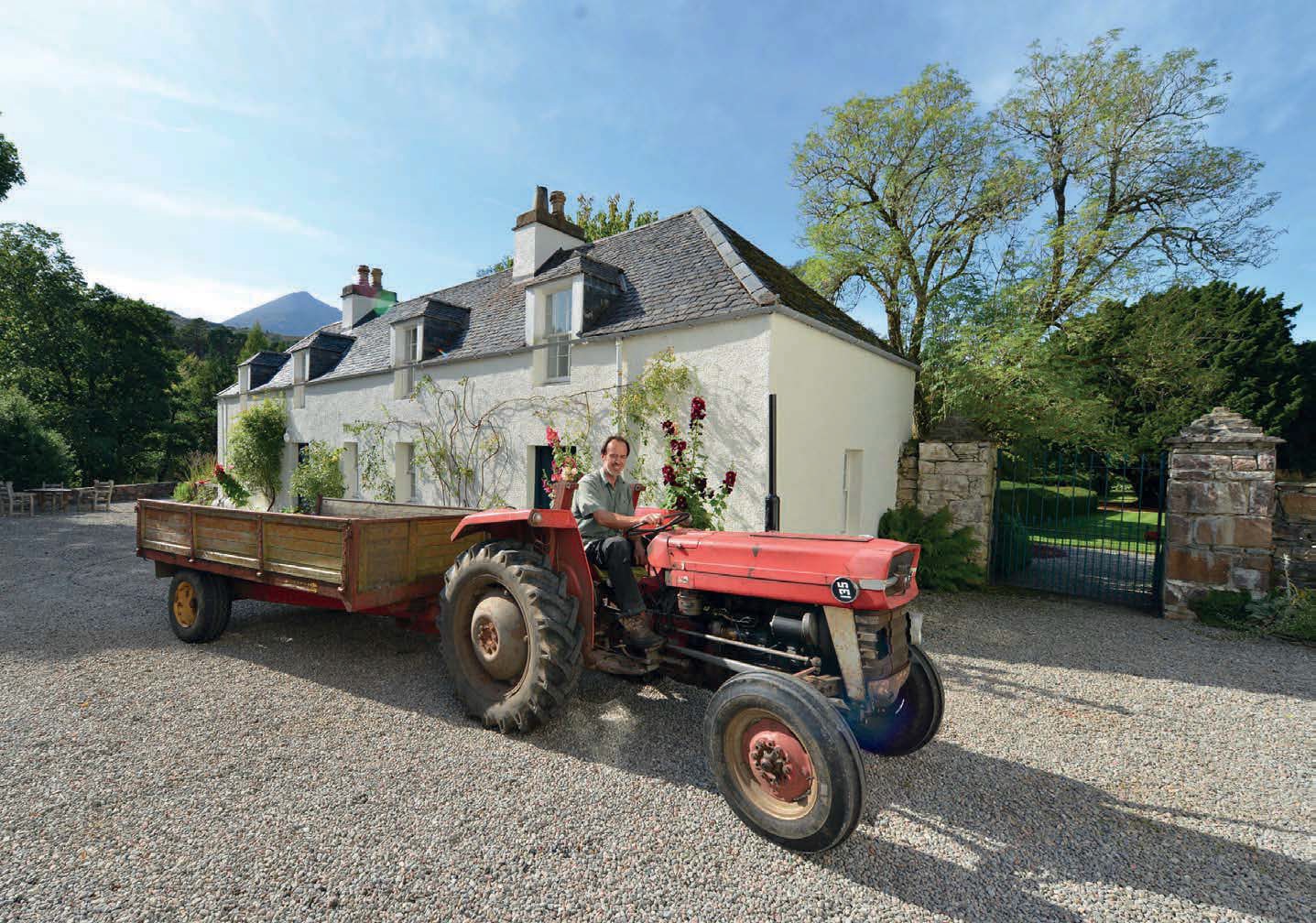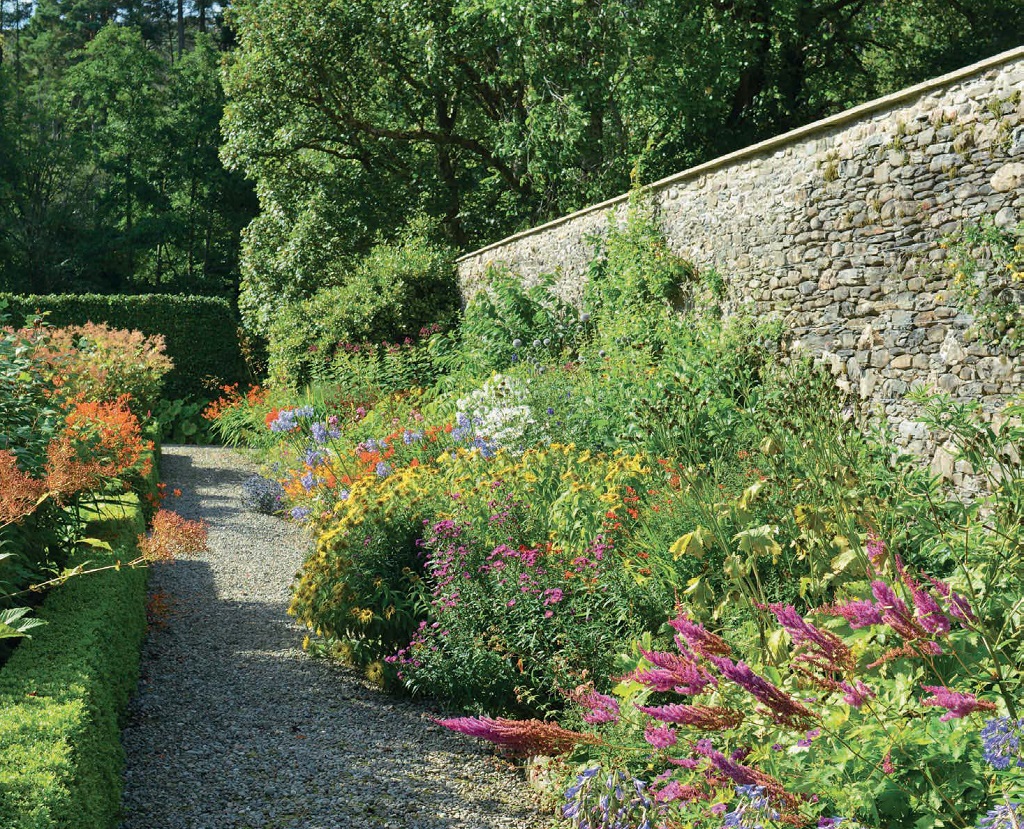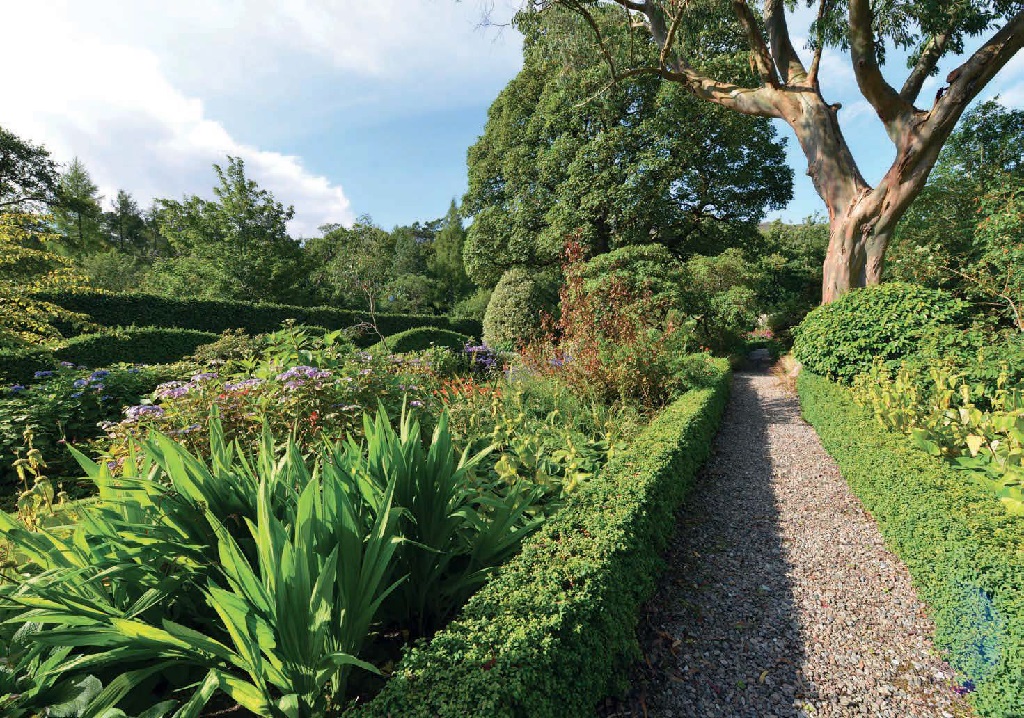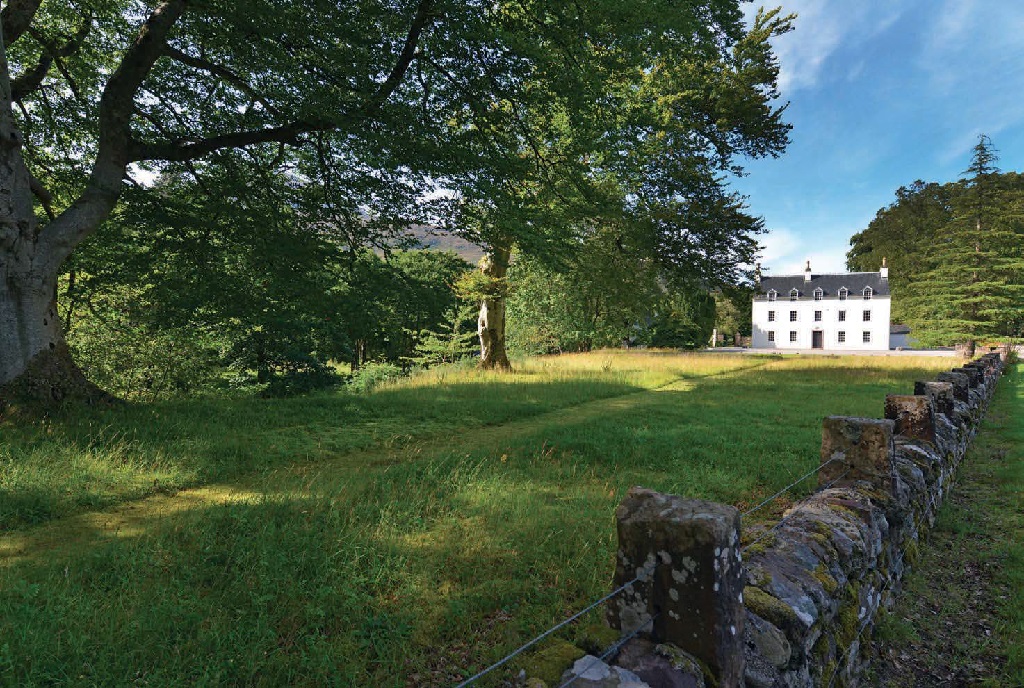![Garden4 Will Soos sets off to the four-acre arboretum [Photo: Angus Blackburn]](https://www.scottishfield.co.uk/wp-content/uploads/2021/02/Garden4.jpg)
Reviving the walled garden at Dundonnell House
Lady Jane Rice set about reviving the walled garden at Dundonnell when she moved here – a project that continues to flourish.
Dundonnell House and its walled garden sit in a dramatic position at the head of a sheltered valley in Wester Ross, with the peaks of An Teallach rising up behind.
The magnificent setting is further enhanced by the River Dundonnell, which runs so close to the house that it defines the lower part of the garden wall. It was this unique setting that Lady Jane Rice, wife of the lyricist Tim Rice, was so keen to enjoy when the family purchased the estate.
The garden’s history is an intriguing one. The estate was originally the property of the Mackenzie family, who built the white harled house on the site of an earlier house overlooking the walled garden. Here, the classical layout of a central path framed with parallel yew hedges and backed by lawns has at its heart a 2,000-year-old yew tree and the ancient holly planted by the Mackenzies.

Will Soos sets off to the four-acre arboretum [Photo: Angus Blackburn]
‘Through Bunny, I was asked to lunch at Dundonnell one snowy day in April shortly before both brothers died,’ Jane explains. ‘On that day I met Alan briefly: he was a great plantsman and it was thanks to him that the garden became so notable.’
By the time she moved to Dundonnell, the garden was sadly neglected, although there were well-established trees, including varieties of prunus. ‘It was very overgrown. It took us ages just to get down the paths,’ she says. ‘There was thick lichen everywhere and you felt overwhelmed by the height of the trees.’
In the early years, the walled garden was managed with expert but part-time help. Things changed when Will Soos, a graduate of Threave Horticultural College with ten years’ experience at Inverewe Gardens, was persuaded to come to Dundonnell. ‘It was a long, slow wooing process,’ Jane admits.

Dense planting in layers ensures a succession of colour [Photo: Angus Blackburn]
Sir Tim’s insistence on a tight budget meant that changes had to be made slowly. This, Jane admits, allowed time to study the conditions, including the effect of the average 100 inches of rainfall a year. ‘At some point I managed to get around the accountants to install a contemporary water feature by William Pye in the middle of the garden,’ she says. This spectacular piece, with its iris-like flutes, now forms the focal point for much new planting. Plants are propagated in the restored Victorian glasshouse.
Equally exciting for Jane, who has a passion for natural history, is the fenced-off acreage of land visible from the house. ‘It is filling up with oak, ash and prunus,’ she says. ‘Wild flowers, including primroses, violets, bugle and wood anemones, are beginning to spread.’
Despite storm damage that eliminated many mature trees, Jane’s work in reintroducing red squirrels to Dundonnell has not been affected.

Will’s serpentine hedges soften the original straight lines [Photo: Angus Blackburn]
The path leads towards a pond area, backed with a series of bog-loving plants, including iris and rodgersia. Behind this area, Jane has introduced an Alpine garden. ‘I am passionate about Alpines,’ she says. ‘Everything is so big in the Scottish landscape, it is nice to have a compact, sloped area with small plants.’
Near the river, Will has shaped a tall box hedge with serpentine-like curves to create additional interest.
In the kitchen garden, where vegetables are interspersed with flowers, the beds are backed by a series of rustic metal arches raised on wooden posts to support roses and fruit trees.

Mown grass paths thread through the policies [Photo: Angus Blackburn]
The arch theme is particularly evident in the central laburnum arch, built by Alan Roger. A blaze of yellow in spring, it lies behind the water feature and highlights an elegant torso sculpture by Emily Young from stone found in the river.
Jane insists that the beauty of this garden is entirely due to Will’s hard work and skills. ‘In summer I go out first thing and then again at night when it’s quiet, and spend hours walking round thinking how wonderful it is.’
(This feature was originally published in 2016)
TAGS

